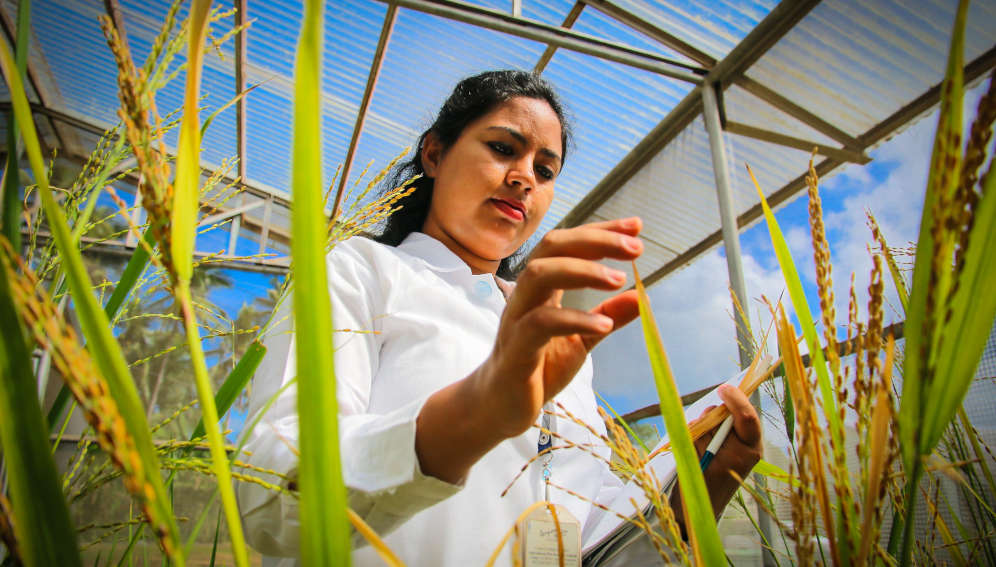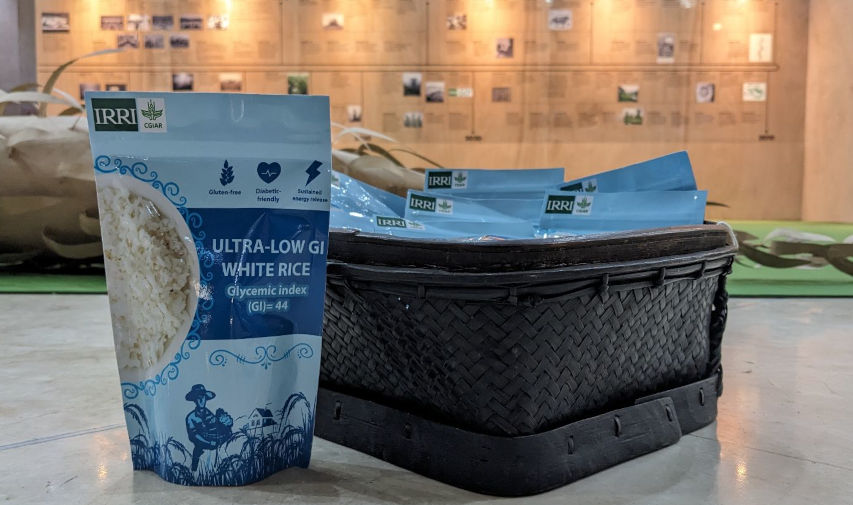20/10/23
Breakthrough makes rice guilt-free for diabetics

By: Joel Adriano
Send to a friend
The details you provide on this page will not be used to send unsolicited email, and will not be sold to a 3rd party. See privacy policy.
[MANILA] Good news for those who can’t get enough of rice but are worried about their sugar and carb intakes.
The International Rice Research Institute (IRRI) announced they achieved a scientific milestone with the discovery of the genes responsible for low and ultra-low glycaemic index (GI) in rice.
With this finding, researchers can now convert popular rice varieties anywhere in the world into low and ultra-low GI for refined white rice through conventional breeding starting in the Philippines, IRRI’s Interim Director General Ajay Kohli said.
The announcement was made during the 6th International Rice Congress in Manila on Monday (16 October), with the first batch of ultra-low GI rice samples presented during the event.
Glycaemic index is a scale that ranks foods from 0 to 100 to gauge their effect on blood-sugar levels. The lower the GI of a certain food, the less it may affect your blood sugar levels. Inversely, high GI foods can cause sugar levels to spike. For instance, pure sugar has a score of 100.
High GI food increase the risks of diabetes, obesity and cardiovascular diseases. This makes GI a useful tool to help those with diabetes, a chronic disease noted for sustained high blood sugar levels, manage their condition and make healthful decisions about their diet and nutrition.

IRRI classifies glycaemic index levels below 45 as ultra-low and 46-55 as low GI.
According to the WHO, diabetes was the direct cause of 1.5 million deaths worldwide in 2019, of which 48 per cent occurred before the age of 70 years. The International Diabetes Federation put the number of people with diabetes at 537 million in 2021, and the organisation expects that one in every eight adults will have diabetes by 2045.
Rice is the main staple in more than 100 countries and “nearly half of the world’s population”, said Kohli. Three of the world’s four most populous nations have rice as their staple – India, China and Indonesia – which together contain over 3 billion people.
Rice is considered to have a considerable amount of carbohydrates and a high GI, though with varying levels depending on the variety. White and sticky varieties are known for their high GI. Brown rice has a lower GI. But it is also much more expensive.
IRRI classifies glycaemic index levels below 45 as ultra-low and 46-55 as low GI. Those above 70 are high GI. Many of the popular cultivated rice varieties have a GI ranging from 70 to 92.
According to IRRI, the newly discovered ultra-low line has a GI level of only 44. The breakthrough ultra-low GI rice was developed from the Samba Mahsuri x IR36ae varieties.
“Expect them to turn out in the Philippine market in a couple of years,” said Kohli.
Commenting on the development, Devinder Sharma, one of India’s leading food security specialists, said: “There are millions, especially in the Asia Pacific region, who are forced to restrict the urge to consume rice just because they happen to be diabetic.
“With ultra-low GI rice, the freedom to consume rice will hopefully be restored.”
However, Rodrigo Angelo Ong, chief research specialist at the Philippine Institute of Traditional and Alternative Health Care, cautioned that the breakthrough doesn’t mean that consumers can now eat rice to their hearts’ content.
If people start eating more rice just because of the lower GI then it defeats the purpose, he said.
“The same rules still follow, same things we advocated before, proper proportioning of rice and moderate intake of carbohydrates,” Ong said.
Kohli emphasised that a lot of current research on rice is not just about climate resiliency and improving productivity, but also healthier rice for consumers. These include the high-zinc rice variety released a couple of years ago and the still to be released gene modified golden rice which is engineered to have higher levels of beta-carotene (Vitamin A).
This piece was produced by SciDev.Net’s Asia & Pacific desk.













